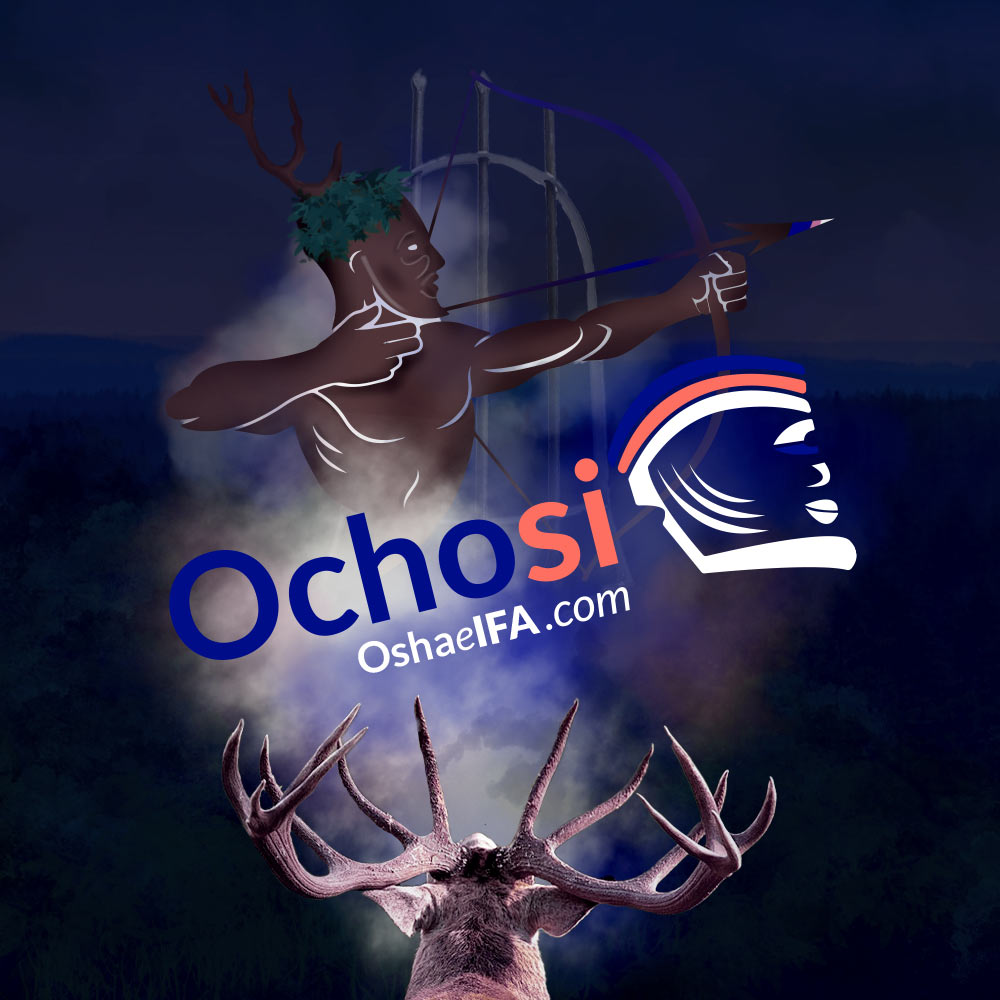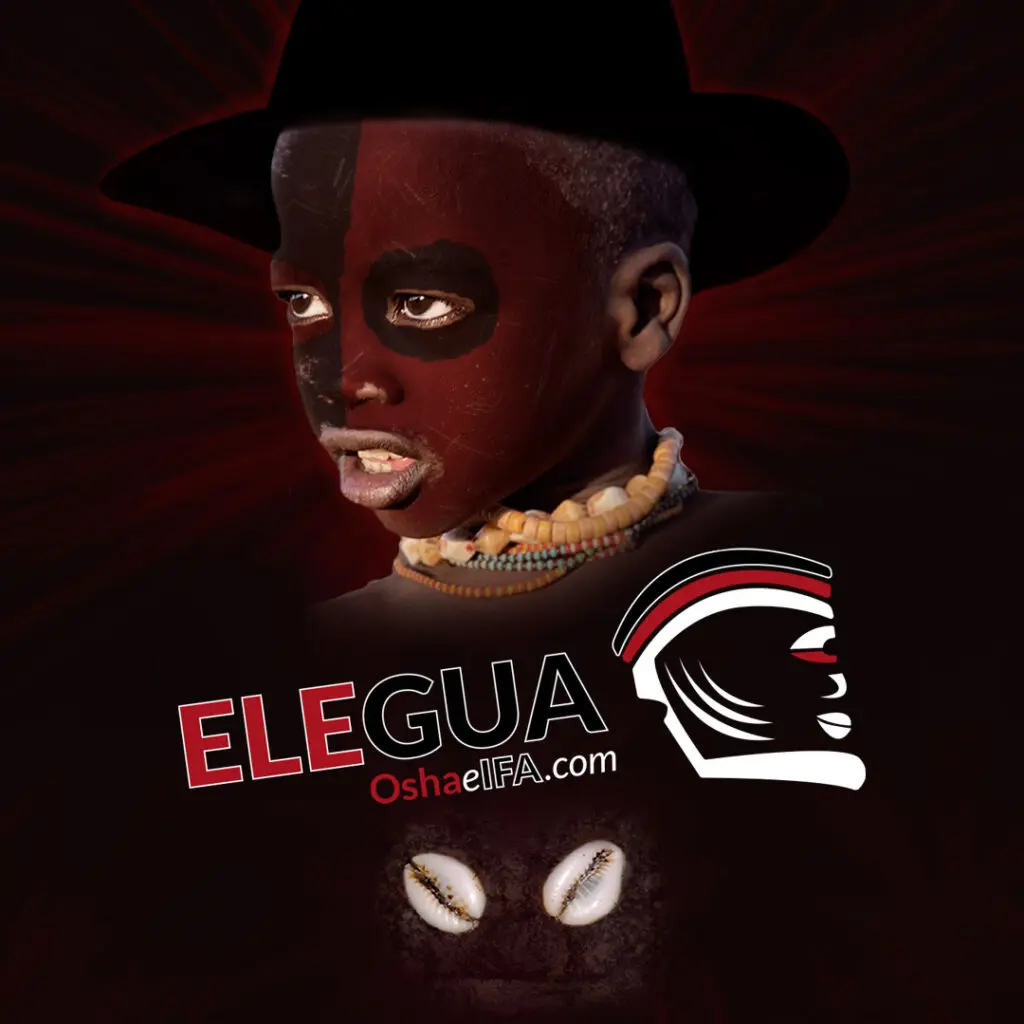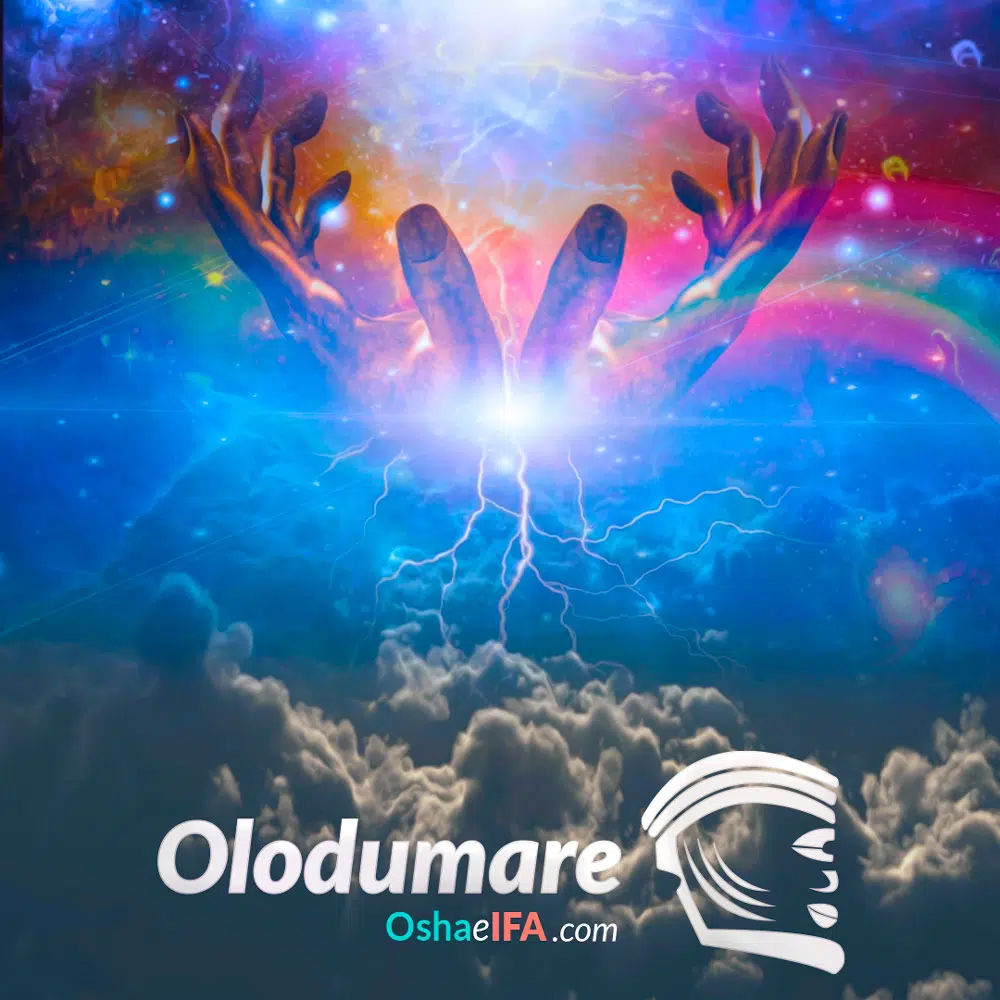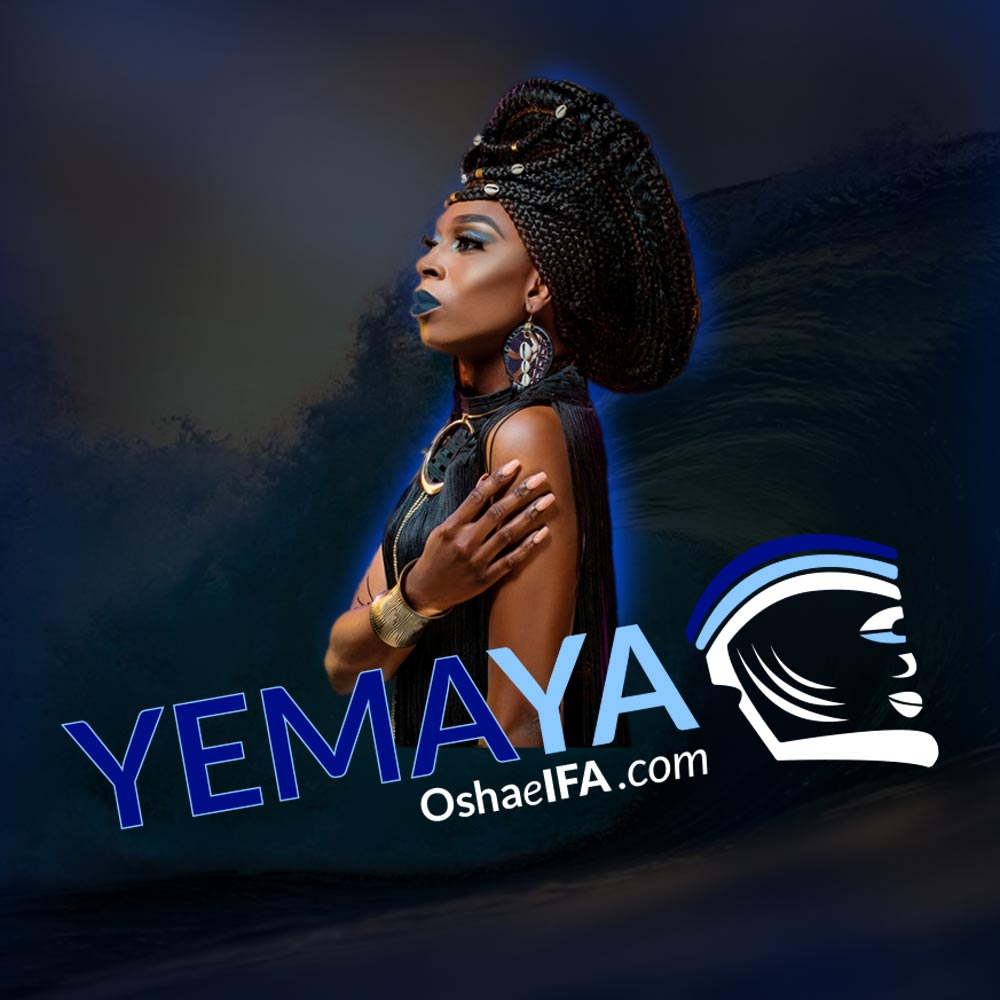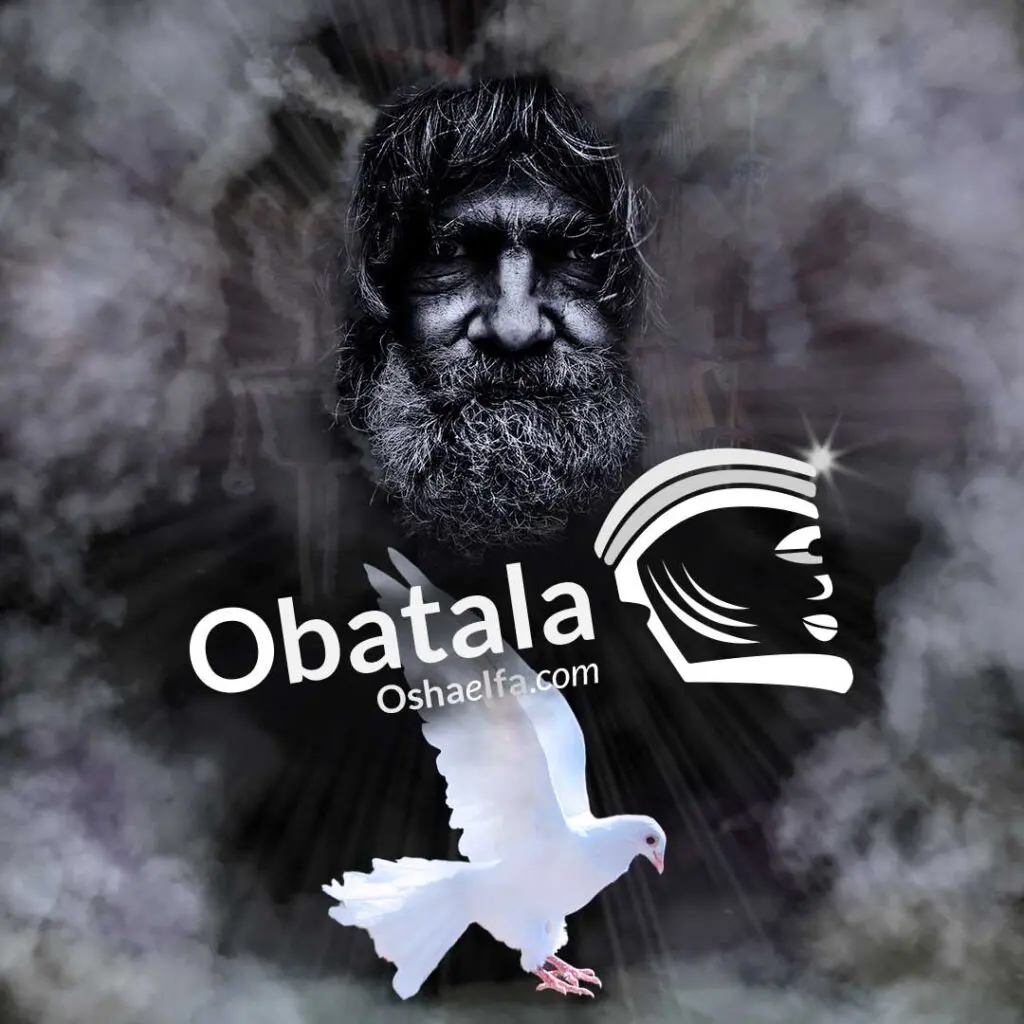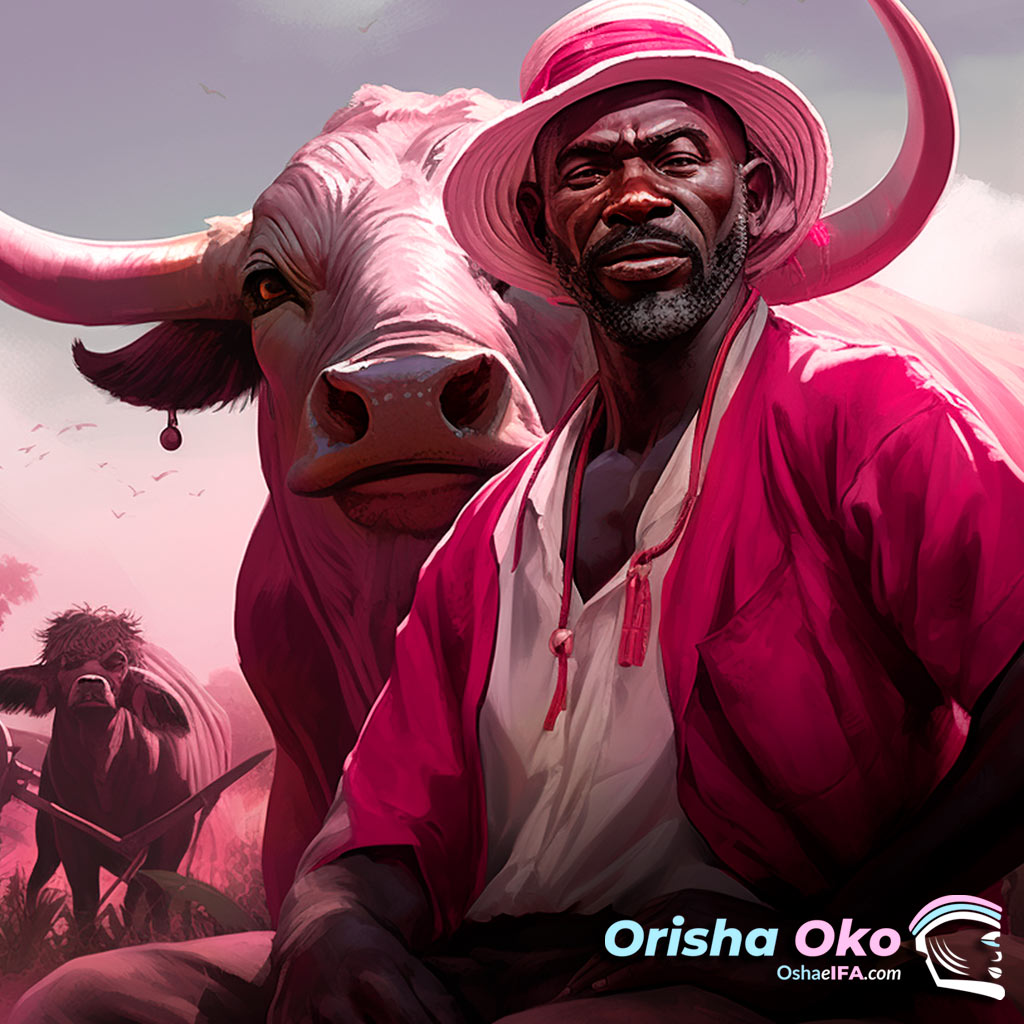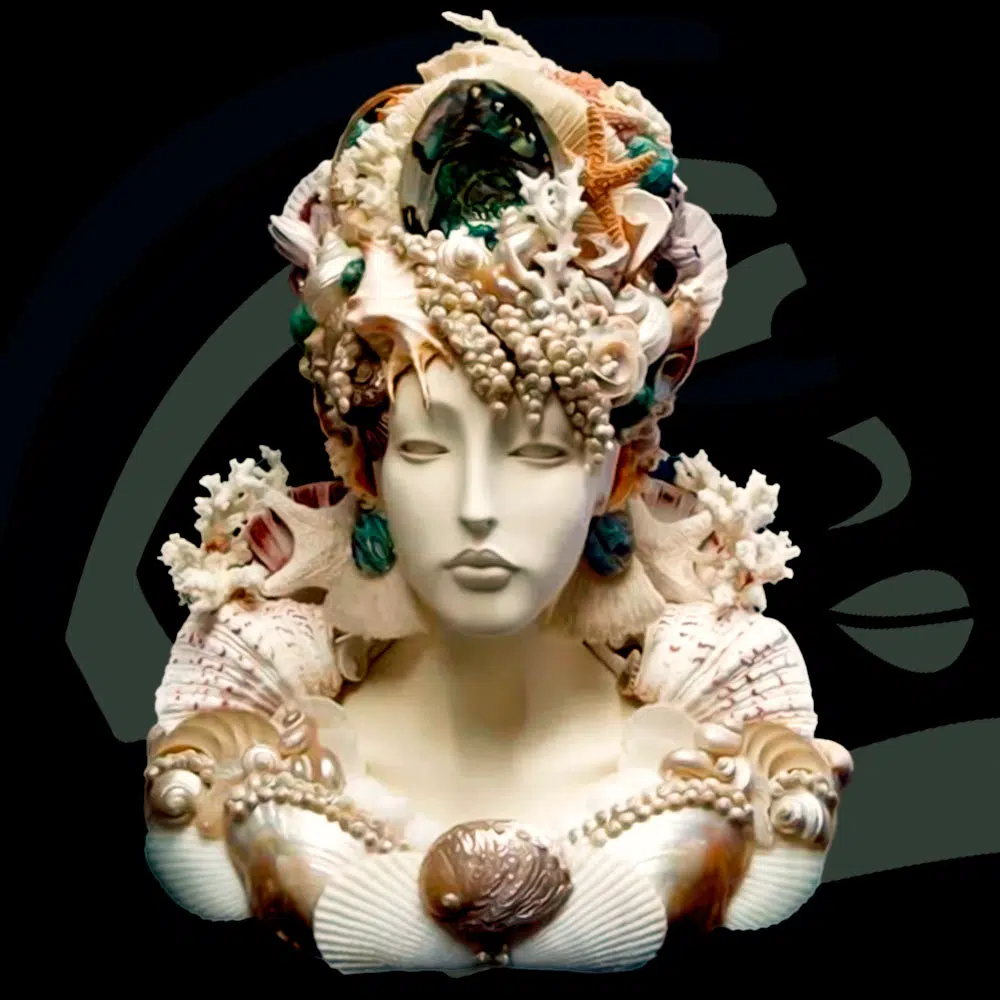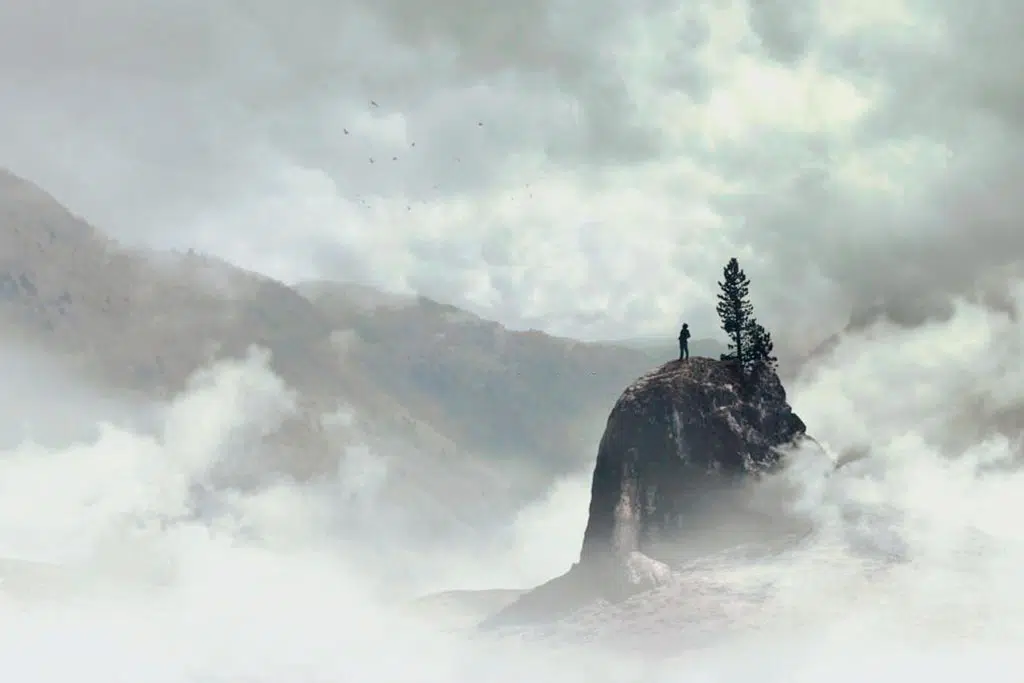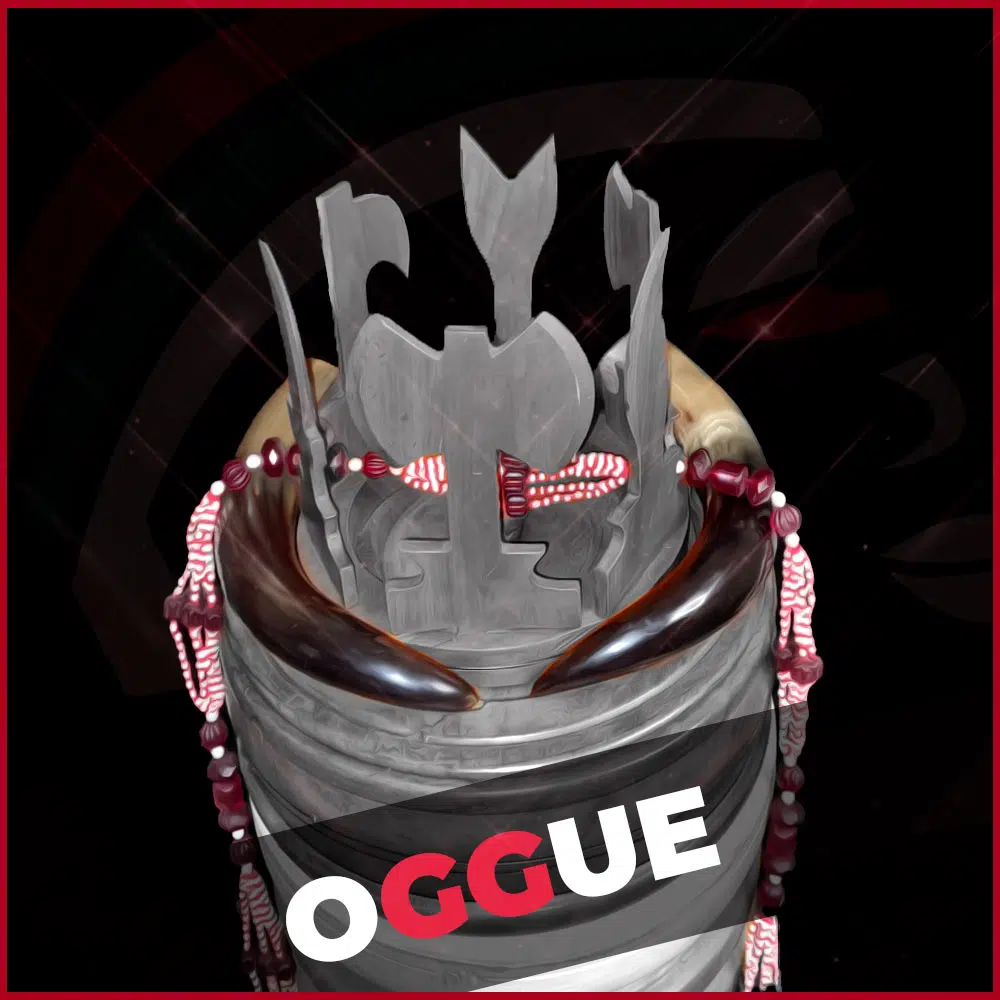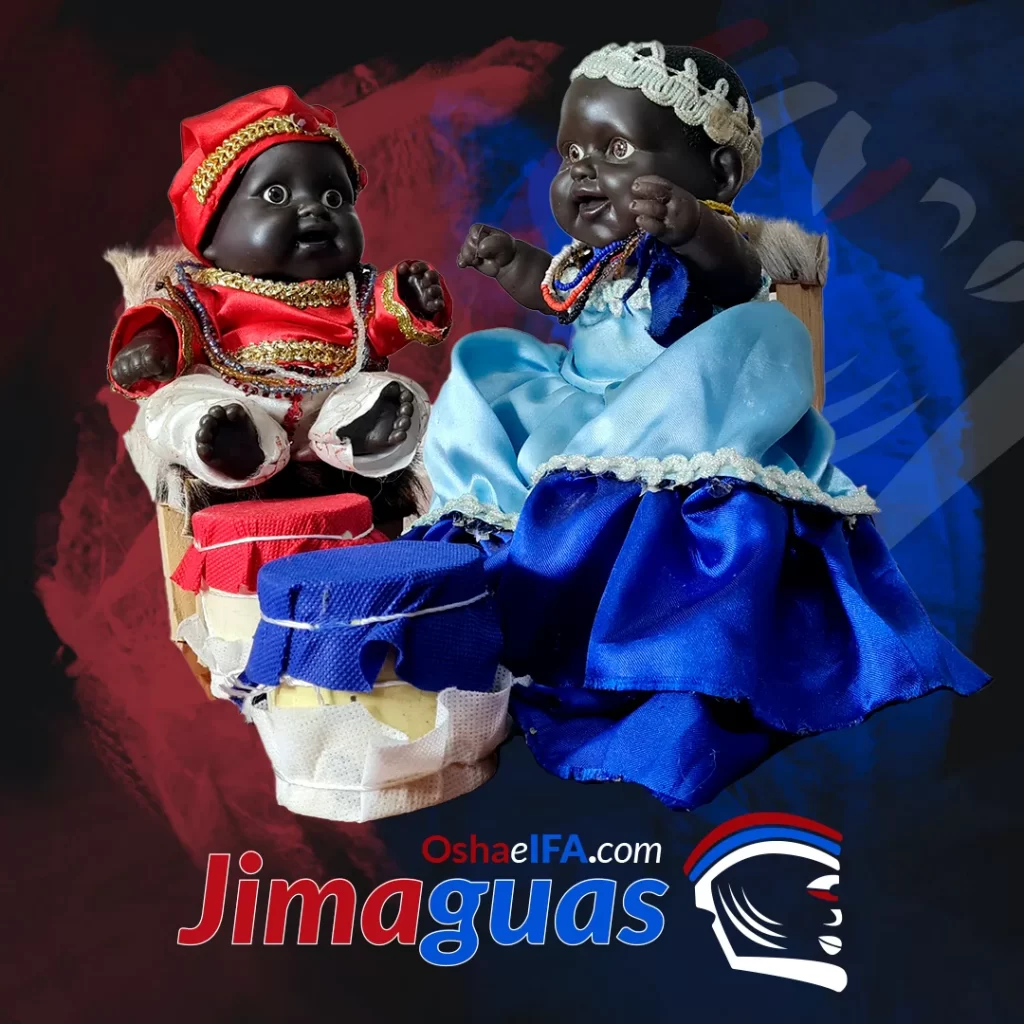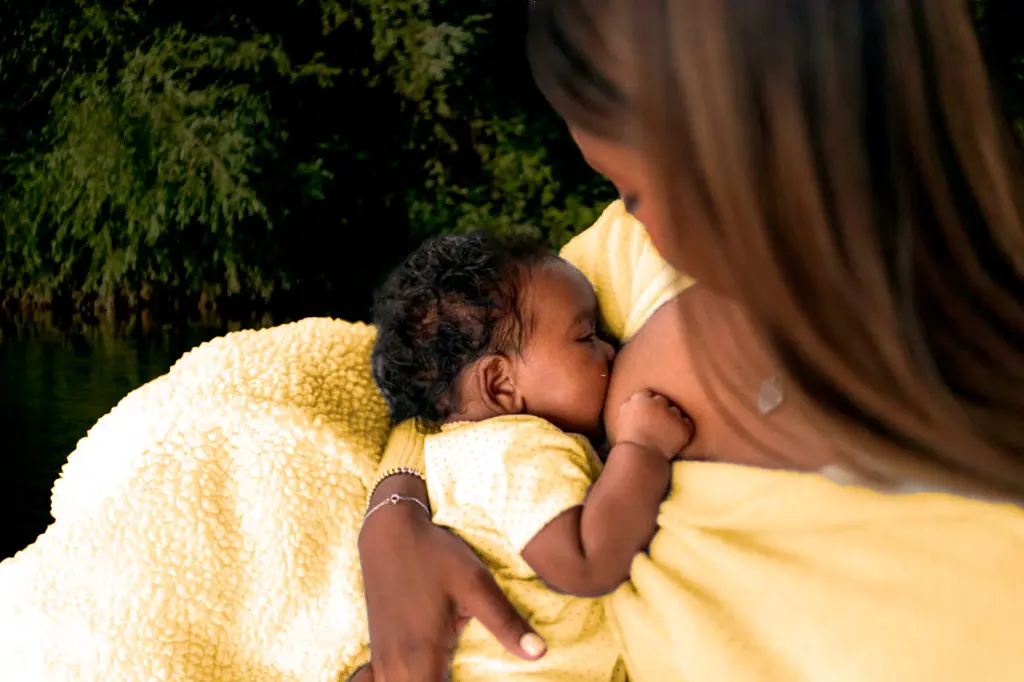The Orishas of the Yoruba religion (Santería)
At the heart of vibrant and rich Yoruba mythology reside the Orishas: divine entities whose stories and legends have shaped not only the creation of the world, but also the life and destiny of humanity. These deities, venerated in various forms across regions and ethnicities, exhibit unique characteristics and attributes, reflecting their power and influence both in the universe and in the daily lives of their devotees. At Oshaeifa.com, we have dedicated ourselves to researching and compiling detailed information about these fascinating beings, providing initiates and believers of the rule of Osha and Ifá with a valuable resource to deepen their understanding and connection with this ancient culture.
Entering the fascinating universe of the Orishas, their impact on the creation of the world and humanity, it is essential to delve into their origin and nature. The Orishas, venerated in Santería and rooted in the rich Yoruba tradition, have a history and meaning that transcends first impressions. We will explore who these divine beings are and how their legacy has been intertwined with the history and culture of a people.
Who are the Orishas? The saints of "La Santeria"
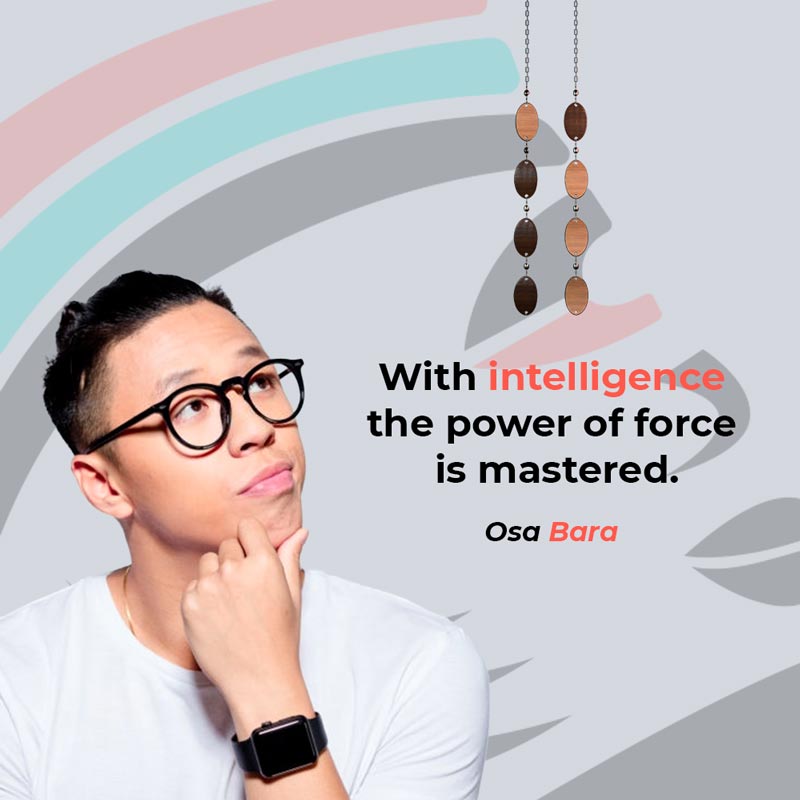
To understand what the Orishas are and how they are recognized as saints in the Rule of Osha or Ifá, popularly known as "Santería", we must remember that these deities come from the culture of the Yoruba people, located in the southwest of Nigeria. This region of West Africa, known for its lush tropical vegetation and abundant crops, is considered one of the most advanced communities in Nigeria, with a complex cultural structure both socially and religiously. The origin of the Yoruba people dates back to the founding of the city-state of Ilè-Ifè, a mythical place where, according to their tradition, God created man, hence its name includes Ilé, which means home. The original Yoruba pantheon is believed to have been enriched with various local deities from neighboring nations as the Yorubas became unified, following its founding by the renowned King Oduduwa, also known as Obalufe, king of the Ifè people. His children and descendants formed a dynasty of kings who were deified and transformed into Orishas. Thus, the Orishas or Saints of Afro-Cuban Santería are beings who were originally mortal and who, for various reasons, transcended, becoming deities venerated by their people due to their outstanding feats. It is important to note that most of the Orishas were kings of the Yoruba nation in life, outstanding warriors and prominent figures in the history of their society.
Meaning within Santería
After understanding who the Orishas are and their origin in Yoruba culture, it is crucial to explore their meaning and function within Santería. In this religious practice, the Orishas are seen as equivalent to saints, acting as intermediaries between God and men. These spiritual entities merge with the forces of nature, manifesting in animals, plants and all levels of existence. According to Yoruba beliefs, each person is born with a purpose, goal and destiny in life, which is often altered by various events. In this context, the Orishas play a crucial role, since they are in charge of fixing these deviations and collaborating so that each individual can fulfill their destiny. Although the original Yoruba pantheon has 401 deities, the arrival of Africans to the American continent and the circumstances of that time resulted in only a smaller number of these deities being worshiped.
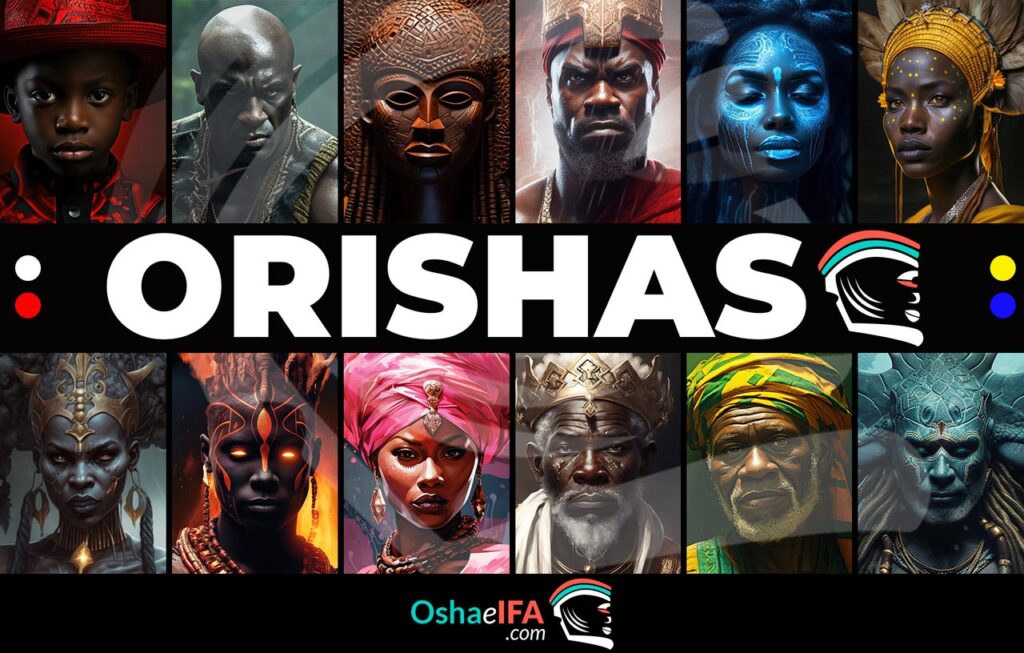
The Orishas Warriors of Santeria
Within the Yoruba pantheon and its manifestation in Santería, a special group of deities stands out for their strength, bravery and power: the Warrior Orishas. These divine figures not only symbolize courage and protection, but also embody essential aspects of life such as justice, balance and the ability to face challenges. Orisha Warriors are revered for their ability to guide and protect their followers, offering a path toward resolving conflicts and overcoming obstacles.
Each Orisha Warrior has their own unique story, distinctive attributes, and a specific role within the religion. From Esu or Eshu, the master of balance and chaos, to Oshosi, the righteous hunter and provider of abundance, these Orishas represent a diversity of energies and teachings. Their worship and veneration are fundamental in the practice of Santería, where each one is invoked for different purposes and rituals, reflecting the rich and complex fabric of this spiritual tradition.
Below, we will further explore each of these powerful Orishas, discovering their stories, their roles, and the way they influence the lives of Santería practitioners.
Elegba, Elegua or Elegbára – The Guardian of the Paths
Deity owner of the roads that lead men to their destination. Skilled Warrior, but also mischievous and trickster. Elegua can be represented as a child or an adult. He is in charge of punishing those who do not comply with the rules established by the Orishas. He opens all the doors of positive paths, as well as the doors of the negative. His job is to be a messenger for the rest of the divinities. He enjoys the consideration of being the first to be worshiped, greeted and cared for in the Yoruba pantheon.
Esu or Eshu – The Balance between Chaos and Order
Considered the counterpart of Olodumare, Eshu cohabited with Olorun since the beginning of time. Ruler of the darkness or emptiness of the original Universe, he is defined as the basic energy of movement and chaos in the universe, causing both balance and imbalance. He is a leading participant in the changes and evolution, distributing the elements of the sacrifice (Ebo) according to the nature of the offering.
In Cuba, Catholic colonizers interpreted Eshu as a representation of evil (the devil), defining Santeria as "witchcraft used for evil." However, in reality, Santería is a religion inherited from the Yoruba culture, where this saint or deity is considered the one in charge of creating a dynamic balance between all forces, including spiritual ones, with both destructive and constructive capacity.
Oggun – The Warrior and Master of Blacksmithing
Oggun, powerful warrior and sorcerer, is the owner of all metals, blacksmithing and all metal tools for work. Guardian of the truth of Ifá, he represents pacts, the word, promises, creative work and war. In Cuba, he is recognized as a violent saint and expert in rough work, revered for his tireless willingness to work and his great physical strength. He is the protector of all those who use tools to provide food and defense.
Oshosi – The Righteous Hunter and Provider of Abundance
Oshosi, a great warrior and expert hunter, rules in prisons and courts, being considered a saint of absolute justice. Related to abundance and prosperity due to his hunting skills, he is also knowledgeable in the arts of sorcery. Oggun's faithful companion, he lives in the mountains and represents balance in all aspects of life. He participates in the phenomena between the spiritual alignment of the forces of nature and ancestral spiritualities, collaborating with people to help them align with their destinies.
Ozun – The Watcher and Messenger of Wisdom
Ozun, messenger of Obatala and Olofi, is also received when the warriors surrender. He is the watchman of the head of the believers, supporting Orumila in the power of divination and real and eminent knowledge. Although he always accompanies the warriors, he does not "speak in a snail's letter" (he is not consulted). He represents life itself. Its receptacle is a covered metal cup, usually adorned with a figure of a rooster on the lid. Said receptacle is always closed and should never be opened; In addition, it must be protected from falling, as this is considered an announcement of death or impending misfortune for its owner.
The Strength and Spirit of the Warrior Orishas
The Orisha Warriors in Santería are much more than mere figures of combat and protection. They embody courage, justice and perseverance, each with a unique story, rich in symbolism and essential teachings. These Orishas not only offer defense and guidance in times of conflict, but also impart lessons about balance, cunning, and the importance of facing life's challenges with strength and wisdom.
As we immerse ourselves in the lives and teachings of Eshu, Elegua, Oggún, Oshosi and Ozun, we encounter a range of stories and symbolism that reflect the rich diversity of Santería and Yoruba culture. Each Orisha Warrior plays a unique and indispensable role, guiding his or her devotees toward a deeper understanding of the forces that shape our lives and the world around us.
We invite you to deepen your knowledge of each of these powerful Orisha Warriors through our specialized articles. In them, you will discover a wealth of wisdom and understanding that will not only enrich your spiritual practice, but also connect you more intimately with these fascinating deities.
Fundamental Orishas of the Osha-Ifa rule
In the Yoruba pantheon and its manifestation in Santería, there is a group of Deities that stand out for their fundamental importance and their deep connection with the essential aspects of human existence and the universe. These Fundamental Orishas are revered not only for their power and wisdom, but also for their crucial role in creating, maintaining and balancing the world. Each of them represents vital forces and aspects of life that are essential to the understanding of the Yoruba worldview and the practice of Santería.
Olodumare – The Supreme Source of Creation
Olodumare, the creator God in Santería, is the essence of omnipresence, omniscience and omnipotence. He represents the primordial life energy and supreme force from which all creation emanates. Although distant from human reality, all life springs from it, being the pillar of universal existence.
Olorun – The Splendor of the Sun
Olorun, personified by the Sun, is the most tangible manifestation of Olodumare. He represents the vital light and life itself, being a direct reflection of the supreme divinity in the material world.
Olofin – The Divine Connection with the Earthly
Olofin, the manifestation of Olodumare in contact with living beings, is known as "Igba Odun", the feminine energy of the supreme divinity. He is considered the architect of the world and life, acting as the direct link between Olodumare and creation.
Obatala – The Orisha of Peace and Purity
Obatala, a prominent representative of Olorun, is revered for his peace, purity and order. Considered both masculine and feminine, he rules over heads, granting health and tranquility, and is described as the youngest and most protected creation of Olodumare.
Oshun – The Deity of Rivers and Fertility
Oshun, the divinity of rivers, is the owner of fertility and a powerful sorceress. Linked to the Oshun River in Nigeria, she is revered for her influence on beauty, love, gold and wealth, being a maternal and ancestral figure.
Yemaya – The Mother of Waters and Motherhood
Yemaya, whose name means "Mother of the fish", is the deity of motherhood and fertility. Owner of the sea and waters, she is considered the source of life and is closely related to the spiritual world and maternal protection.
Oya – The Warrior of Winds and Storms
Oya, also known as Oya Iansa, is the Orisha of War, winds and storms. Famous for her violent and warlike nature, she fights with two swords alongside Shango and is the taskmaster of the dead, symbolizing transformation and change.
Shango – The King of Thunder and Justice
Shango, the Orisha of thunder, lightning and justice, He is revered for his bravery and strength. Former king of Oyo and now deified, he represents power, passion and masculine energy. He is known for his skill in dancing, his charisma and his mastery over fire and lightning, being a central figure in Santería for his leadership and virility.
The Essence and Power of the Fundamental Orishas
The Fundamental Orishas in Santería are much more than mythological figures; They are essential pillars of faith and religious practice. Each of these Orishas represents fundamental aspects of life, nature and the human spirit, offering a window into the deep understanding of the forces that shape our world and our existence.
From Olodumare, the supreme source of all creation, to Shango, the vibrant king of thunder and justice, these Orishas embody the diversity and richness of Yoruba culture. Through their stories and symbolism, we connect with the ancestral teachings and eternal truths that support Santería.
Each Fundamental Orisha has a unique and vital role, not only in the Yoruba pantheon, but also in the life of each practitioner. They guide, protect, teach and, above all, connect us with the divine and the sacred. Their veneration is a constant reminder of the interconnection between the human and the divine, the material and the spiritual.
We invite you to explore more about each of these fascinating Fundamental Orishas in our dedicated articles. In them, you will find enriching details about their stories, their roles, and their influence on Santería. This deepening of their knowledge will not only enrich your spiritual practice, but will also give you a more intimate and personal connection with these powerful deities.
Olodumare, Olorun and Olofin: The names of God
Orunmila the Great Diviner of Ifa
Oya
Oshun
Yemaya
Obatala
Shango
The Greater Orishas of the Yoruba Religion
In Santería or Yoruba Religion, the Greater Orishas occupy a place of great importance. These deities, with their deep stories and symbolic meanings, represent the vital forces and fundamental aspects of human and natural existence. Each Greater Orisha has unique attributes and teachings, offering the faithful guidance, protection and wisdom in various aspects of life. From medicine and agriculture to war and chastity, these Orishas embody the diversity and richness of Yoruba culture and its expression in Santería. Through their stories and cults, practitioners of the Osha-Ifá Rule find a path to spiritual balance and harmony with the natural world.
Oduduwa – The Ancestor and Sovereign of the Earth
Oduduwa, revered as the ancestor and ruler of the earth, is an Orisha of great importance in Yoruba mythology. He represents authority, creation and order, being considered the founder of the Yoruba civilization. His worship emphasizes the importance of tradition, leadership and spiritual fatherhood.
Agayu – The Orisha of Earthly and Volcanic Force
Agayu, son of Oroiña, is the powerful Orisha of volcanoes, the earth and earthly energies. He represents the force of rivers, the power of lava and earthquakes. With a warlike and wrathful temperament, Agayu is revered for his immense power, symbolized by his double-bladed ax and his staff. He is the embodiment of the energy that renews and transforms the earth.
Osanyin – The Guardian of Nature's Secrets
Osanyin, revered as the master of medicine and botanical knowledge, is the Orisha of herbs, roots and the plant kingdom. He resides in the mountain, being fundamental in the consecration of religious attributes. His worship emphasizes the importance of ancestral wisdom and natural healing.
Babalú Ayé – The Protector of the Sick and Beggars
Babalú Ayé, also known as Sànpónnà and San Lázaro, is the Orisha of illnesses and protection of the sick and disadvantaged. He is associated with conditions such as smallpox and leprosy. Son of Naná Burukú or Obatalá, his name means "father of the world." He works closely with the dead, being a saint of great veneration.
Orisha Oko – The Patron of Agriculture and Harvests
Orisha Oko, the deity of the earth and agriculture, is the protector of farmers and the arbitrator of disputes. Known for his industriousness and chastity, he ensures the prosperity of the land. His messengers, the bees, symbolize his connection with nature and the cycle of life.
Olokun – The Orisha of the Deep Sea and Wealth
Olokun, lord of the deep sea, is an Orisha of mystery and wealth. He represents the ocean's unfathomable power, abundance and emotional depth. His cult teaches about spiritual wealth, introspection and respect for the mysteries of life and nature.
Inle (Erinle) – The Orisha of Medicine and Extractive Economy
Inle, also known as Erinle, is a senior Orisha, hunter, fisherman and doctor of the Osha. Patron saint of doctors and owner of the river, he represents the extractive economy, especially fishing and gathering. Androgynous and of great beauty, Inle personifies the union of earth and water.
Yewa – The Orisha of Chastity and Protector of the Dead
Yewa, the divinity of the Yewá River, is the Orisha of female chastity and gloomy feelings. A warrior and brave, she rules over the dead and is characterized by her beauty and her red clothing, armed with a sword and a necklace of sea snails.
Òbbà – The Divinity of Commerce and Marital Fidelity
Òbà, the most intelligent of the Yoruba pantheon, is the Orisha of commerce and marital fidelity. Warrior and master in the use of weapons, she is known for her sacrifice and suffering for her love. Chango's wife, she dresses in red and white and is recognized for her selflessness and loyalty.
A Journey Through the Yoruba Pantheon
In this section, we have explored the diversity and depth of the Greater Orishas, each with their unique essence and role in the Yoruba cosmos. From the ancient wisdom of Oduduwa to the unfathomable wealth of Olokun, these Orishas represent different facets of life, nature and the human spirit.
We invite our readers to deepen their knowledge and understanding of these powerful beings through our dedicated articles. In them, you will find a rich narrative that not only tells the story of each Orisha, but also offers a window into their meaning and influence on everyday life and spiritual practice.
By delving into each article, followers and enthusiasts of Santería and Yoruba culture will be able to connect more intimately with these divine beings, better understanding how their wisdom and power can influence and enrich our lives. Each Orisha is a universe in itself, full of lessons, stories and symbolism that reflect the rich tapestry of Santería and Yoruba culture.
Discover more about these fascinating Orishas in the articles that follow, where each one is presented with the detail and respect they deserve, offering invaluable spiritual and cultural guidance.
Oduduwa
Beautiful
Babalu-Aye
Inle
Ozain: The Herber of the Yoruba Pantheon
Agayu Alone
Orisha oko
Obba
Olokun
Other deities of the Yoruba religion
In the broad spectrum of the Yoruba religion, beyond the best-known Orishas, there is a universe of deities and spiritual entities that, although less famous, are equally captivating and fundamental. This section delves into the world of these extraordinary figures, each contributing their own essence and lessons to the rich narrative of Yoruba mythology. From the enchanting duality of the Ìbejì to the ancient wisdom of Egungun, these entities complement the diversity and depth of Yoruba tradition.
Ìbejì or Jimaguas – The Twins of Fortune and Duality
The Ìbejì, represented by twin brothers, are Orishas that symbolize good fortune and the protection of children, especially those born in multiple births. They embody the principle of duality and are linked to beginnings and growth, such as the birth of rivers, human beings, and the sprouting of plants.
Egungun – The Spirit of the Ancestors
Egungun represents the soul or spirit of the dead, custodians of the secrets of knowledge. This concept encompasses the spirits of ancestors and the deceased worthy of respect and adoration, reflecting the importance of lineage and ancestral memory in earthly life.
Nàná Burúkú – The Orisha of Swamps and Tranquility
Nàná Burúkú, revered as the great grandmother of Yoruba tradition, is the Orisha of the swamps, revenge and serenity. She represents benevolence, dignity and gentleness, raising children with gentleness and patience, and symbolizes wisdom and balanced justice.
Ogue – The Protector of Livestock
Ogue, represented by two bull horns, symbolizes the energy of livestock, essential for human nutrition. Linked with Shango, he embodies the life force and prosperity that comes from the earth.
Oke – The Orisha of the Mountains
Oke, divinity of mountains and heights, is responsible for extracting Ashe, vital energy, for humans. Although closely related to Obatala, Oke is considered Changó's greatest disciple on Earth.
Dada Igbañi – The Orisha of Vegetables
Dada Igbañi, Shango's sister, is the Orisha of vegetables. In some traditions, she is considered Shango's mother, highlighting her role in raising her and in her history.
Aje Shaluga – The Deity of Fortune and Wealth
Aje Shaluga, Orisha of fortune and material wealth, is invoked for economic progress. Considered a funfun deity, he is associated with Obatala and Oshun, and is represented with a large Aye snail, accompanied by a variety of snails and coins from different parts of the world.
Ayao – The Orisha of the Desert
Ayao, sister and messenger of Oya and daughter of Bromu and Brosia, is a small deity who lives among the roots of the ceiba tree. She represents virginity and calm, being essential for Oya's children.
Oshumare – The Orisha of the Rainbow and Transformation
Oshumare, an androgynous divinity represented by a cobra, is the Orisha of the sky and the rainbow. She symbolizes the union between heaven and earth, extreme changes and the unexpected. Shango's servant, she is responsible for communication between the upper and lower spheres of the cosmos and governs the air and certain atmospheric phenomena.
Iyami Osoronga – The Powerful Witch Mothers
The Iyami Osoronga, often referred to as the "Witch Mothers", are powerful and respected female entities in the Yoruba religion. They represent both creation and destruction, and are known for their wisdom, power, and ability to influence both worldly and spiritual matters. These deities are revered and feared for their deep knowledge of magic and the hidden secrets of the universe. Its presence in Yoruba mythology underlines the importance of feminine power and respect for the mysterious forces of nature.
Oroiña – The Voice of the Volcano and Mother of Agayú
Oroiña is a female deity of great power in the Yoruba religion, symbolizing the burning fire at the center of the Earth. Known as the voice of the volcano, its presence evokes the strength and intensity of the earth's core. Oroiña is revered as the mother of Agayú, which reinforces her connection with earthly and volcanic energies. Her figure represents the transformation and renewal that comes from the depths of the earth, reminding us of the immense and often hidden power of nature.
Exploring the Wealth of Lesser Known Yoruba Deities
In this section, we have expanded our gaze to encompass less recognized, but equally essential deities and spiritual entities in the Yoruba religion. From the duality of the Ìbejì to the volcanic force of Oroiña, each figure brings a unique and enriching perspective to our understanding of this profound spiritual tradition. These stories and symbolism, although not always the best known, add depth and variety to the Yoruba spiritual universe, providing a broader and more detailed view of its rich diversity.
oshumare
Aje Shaluga: Orisha of fortune
Oke: The Orisha of the hill and the heights
Ayao: Oya's younger sister
Oggue: Orisha patron saint of farm animals
Eggun or Egungun: The spirit of the ancestors
Dada: Orisha representing the crown of the Iworos
Oroina
Nana Buruku
korikoto
Aina
The Ibeyis or Jimaguas
Ideu: The Lost Son of Oshun
Iyami Osoronga: Who are they, Offerings, Worship, Initiation
Other Concepts and Divinities in Santeria
Santería, with its roots deeply anchored in the rich Yoruba tradition, is a mosaic of deities, spirits and concepts that go beyond the best-known Orishas. This section is dedicated to exploring some of the less prominent but equally significant figures and notions within Santería. Although not as frequently mentioned, these elements play crucial roles in the understanding and practice of this rich spiritual tradition.
Ifa – The Supreme Oracle
Ifa is not just a divination system; is a comprehensive spiritual guide in Santería. His wisdom and teachings are fundamental in making decisions and understanding the paths of life.
You can read: What is Ifa? The Signs and their Meaning
Ìrokò – The Spirit of the Sacred Tree
Ìrokò, more than a simple tree, is a powerful spirit in Santería. It represents the connection between heaven and earth, being a meeting point for numerous spiritual entities.
Àbata – The Protector of Waters
As Erinle's wife and fishing deity, Àbata symbolizes the abundance and provision that comes from the waters, an essential element in life and religious practices in Santería.
Bóromu and Bórosiá – The Keepers of Secrets
These divinities are fundamental in the protection and maintenance of sacred knowledge related to life and death in Santería.
Yembó or Yemú – The Mother of the Orishas
Yembó or Yemú is venerated as a primordial maternal figure, whose presence and teachings are essential to understanding family and community dynamics within Santería.
Ori – The Divinity Within
In Santería, Ori is not just a concept; It is a personal deity that represents the spiritual essence and destiny of each individual.
Aroni – The Sage of Herbs
Aroni, known for his knowledge of herbs and sorcery, is a key figure in the practice of traditional medicine and spiritual rituals in Santería.
These concepts and divinities, although less known, are pillars in the structure of Santería. Each brings a unique layer of depth and meaning to this spiritual practice, enriching the experience and understanding of its followers.
Conclusion: A Journey through Yoruba Divinity
In our journey through the world of the Orishas, we have discovered the depth and richness of the Yoruba religion. From the powerful Orisha Warriors to the fundamental pillars of creation, each deity reveals unique aspects of Yoruba wisdom and its connection with the universe. These divine entities are not only cult figures, but also symbols of the forces of nature and spiritual guides that influence our daily lives.
As we delve into the stories and teachings of the Orishas, we find a mosaic of beliefs and practices that reflect the diversity and complexity of this spiritual tradition. Each Orisha, with its history and attributes, invites us to reflect on the mysteries of life, destiny and our connection with the natural and spiritual world.
At Oshaeifa.com, we will continue to explore and share knowledge of these fascinating beings, offering our readers a window into the rich Yoruba tradition. We invite you to continue delving deeper into this spiritual journey, discovering the lessons and wisdom that the Orishas have to offer.
